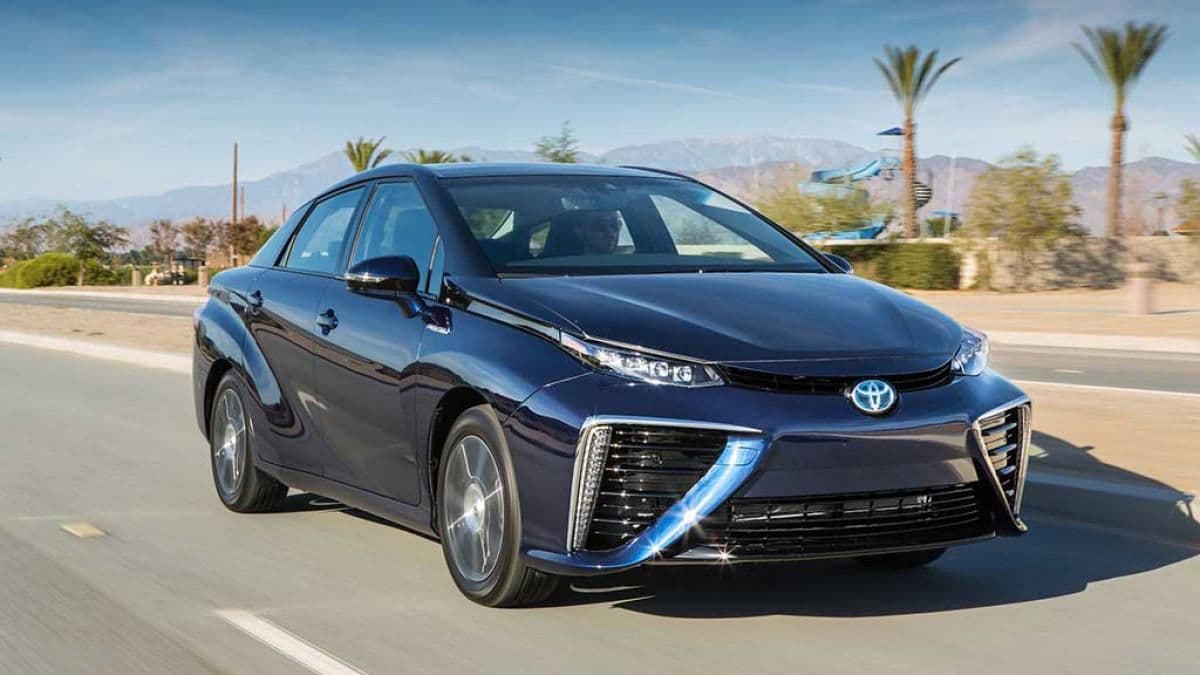Toyota: Mirai News
#1
Race Director
Thread Starter
Toyota: Mirai News
http://www.autonews.com/apps/pbcs.dl...#axzz2S2V1fcFw
The cost of a completed hydrogen fuel cell vehicle is 1/20th of what it was when current prototypes were being developed, paving the way for a workable business model and improved sales prospects, one of Toyota's top engineers said today.
Chris Hostetter, group vice president of strategic planning for Toyota Motor Sales U.S.A., said that prototype fuel cell vehicles cost about $1 million each when they were developed several years ago. But the cost factor for salable vehicles arriving in 2015 will be in the neighborhood of $50,000, he said.
That likely should place the sticker price of the vehicle under $100,000, Hostetter said at the Fortune Brainstorm Green conference here.
Starting in 2015, Toyota plans to sell a fuel cell vehicle in states covered by the California Air Resources Board mandate.
Toyota's current fleet of 100 fuel cell beta-test prototypes is based on the Highlander crossover and carry a real-world range of 440 miles. However, the 2015 production vehicle will have a Prius-like silhouette and size, similar to that of the FCV-R concept hatchback unveiled at the 2011 Tokyo Motor Show, Hostetter said.
An updated version of the FCV-R will be shown at the 2013 Tokyo show.
However, the lack of a workable hydrogen refueling infrastructure could derail the company's sales goals. Toyota fuel cell vehicles may now be sold only in California and New York.
California originally planned to have about 60 hydrogen stations statewide, but the target has dropped to fewer than half that number -- and only eight are currently operational, Hostetter said. On the East Coast, New York is the only state that has a feasible hydrogen infrastructure.
Selling only in California and New York could still represent a couple thousand units. Hostetter predicts the fuel cell sales rate should equal that of the original Prius, which sold 11,000 units nationwide in 2000, when it went on sale in the U.S. market.
The California and New York markets represent a little less than 20 percent of the total U.S. market -- meaning Toyota would be looking to sell about 2,000 fuel cell vehicles in 2015.
Chris Hostetter, group vice president of strategic planning for Toyota Motor Sales U.S.A., said that prototype fuel cell vehicles cost about $1 million each when they were developed several years ago. But the cost factor for salable vehicles arriving in 2015 will be in the neighborhood of $50,000, he said.
That likely should place the sticker price of the vehicle under $100,000, Hostetter said at the Fortune Brainstorm Green conference here.
Starting in 2015, Toyota plans to sell a fuel cell vehicle in states covered by the California Air Resources Board mandate.
Toyota's current fleet of 100 fuel cell beta-test prototypes is based on the Highlander crossover and carry a real-world range of 440 miles. However, the 2015 production vehicle will have a Prius-like silhouette and size, similar to that of the FCV-R concept hatchback unveiled at the 2011 Tokyo Motor Show, Hostetter said.
An updated version of the FCV-R will be shown at the 2013 Tokyo show.
However, the lack of a workable hydrogen refueling infrastructure could derail the company's sales goals. Toyota fuel cell vehicles may now be sold only in California and New York.
California originally planned to have about 60 hydrogen stations statewide, but the target has dropped to fewer than half that number -- and only eight are currently operational, Hostetter said. On the East Coast, New York is the only state that has a feasible hydrogen infrastructure.
Selling only in California and New York could still represent a couple thousand units. Hostetter predicts the fuel cell sales rate should equal that of the original Prius, which sold 11,000 units nationwide in 2000, when it went on sale in the U.S. market.
The California and New York markets represent a little less than 20 percent of the total U.S. market -- meaning Toyota would be looking to sell about 2,000 fuel cell vehicles in 2015.
#4
Senior Moderator
2013 Toyota FCV Concept



#5
Senior Moderator
Press release...
The Toyota FCV Concept is a practical concept of the fuel cell vehicle Toyotaplans to launch around 2015 as a pioneer in the development of hydrogen-powered vehicles. The vehicle has a driving range of at least 500 km and refueling times as low as three minutes, roughly the same time as for a gasoline vehicle.
The vehicle’s exterior design evokes two key characteristics of a fuel cell vehicle: the transformation of air into water as the system produces electricity, and the powerful acceleration enabled by the electric drive motor. The bold front view features pronounced air intakes, while the sleek side view conveys the air-to-water transformation with its flowing-liquid door profile and wave-motif fuel cap. The theme carries to the rear view, which conveys a catamaran’s stern and the flow of water behind.
With Toyota’s proprietary small, light-weight FC Stack and two 70 MPa high-pressure hydrogen tanks placed beneath the specially designed body, the Toyota FCV Concept can accommodate up to four occupants.
The Toyota FC Stack has a power output density of 3 kW/L, more than twice that of the current “Toyota FCHV-adv” FC Stack, and an output of at least 100 kW. In addition, the FC system is equipped with Toyota’s high-efficiency boost converter. Increasing the voltage has made it possible to reduce the size of the motor and the number of fuel cells, leading to a smaller system offering enhanced performance at reduced cost.
Fully fueled, the vehicle can provide enough electricity to meet the daily needs of an average Japanese home (10 kWh) for more than one week.
The vehicle’s exterior design evokes two key characteristics of a fuel cell vehicle: the transformation of air into water as the system produces electricity, and the powerful acceleration enabled by the electric drive motor. The bold front view features pronounced air intakes, while the sleek side view conveys the air-to-water transformation with its flowing-liquid door profile and wave-motif fuel cap. The theme carries to the rear view, which conveys a catamaran’s stern and the flow of water behind.
With Toyota’s proprietary small, light-weight FC Stack and two 70 MPa high-pressure hydrogen tanks placed beneath the specially designed body, the Toyota FCV Concept can accommodate up to four occupants.
The Toyota FC Stack has a power output density of 3 kW/L, more than twice that of the current “Toyota FCHV-adv” FC Stack, and an output of at least 100 kW. In addition, the FC system is equipped with Toyota’s high-efficiency boost converter. Increasing the voltage has made it possible to reduce the size of the motor and the number of fuel cells, leading to a smaller system offering enhanced performance at reduced cost.
Fully fueled, the vehicle can provide enough electricity to meet the daily needs of an average Japanese home (10 kWh) for more than one week.
#6
Toyota Mirai hydrogen fuel cell car coming in 2016
Toyota Press Release
THE FUTURE HAS ARRIVED, AND IT'S CALLED MIRAI
President Akio Toyoda announces name of fuel cell sedan in web video
CEO Jim Lentz announces expansion of Toyota fuel cell infrastructure investment to five-state Northeastern corridor
NEWPORT BEACH, Calif., (Nov. 16, 2014) Akio Toyoda has seen the future, and it's called "Mirai." That's the name of Toyota's new fuel cell vehicle, which the company's president announced in a video released the night before the car's official launch.
Mirai, which means "future" in Japanese, represents a turning point for the automotive industry. The groundbreaking vehicle can travel up to 300 miles on a single tank of hydrogen, refuel in less than five minutes and emits only water vapor.
Expanded Support for New Hydrogen Stations
Of course, the car of the future won't become a reality without the hydrogen stations to support it. That's why Toyota North America chief executive officer (CEO) Jim Lentz announced a new commitment to drive the development of a hydrogen refueling infrastructure in five northeastern U.S. states.
To support Mirai's introduction to the region in 2016, Toyota is collaborating with Air Liquide to develop and supply a phased network of 12 state-of-the-art hydrogen stations targeted for New York, New Jersey, Massachusetts, Connecticut, and Rhode Island. The states and locations have been strategically selected in the greater New York and Boston areas to provide the backbone of a hydrogen highway for the Northeast corridor. Specific details of the collaboration will be revealed in the coming months.
"Toyota's vision of a hydrogen society is not just about building a great car, but ensuring accessible, reliable and convenient refueling for our customers," said Jim Lentz. "I am happy to announce that this vision will expand beyond the borders of California and give customers the opportunity to join the fuel cell movement."
This new announcement builds on Toyota's previous support for hydrogen infrastructure development in California. In May 2014, Toyota announced a $7.3 million loan to FirstElement Fuels to support the operations and maintenance of 19 hydrogen fueling stations across the state. The commitment augments funding provided by the California Energy Commission, and makes Toyota the only OEM to provide working capital for infrastructure development.
TRANSCRIPT OF AKIO TOYODA'S ANNOUNCEMENT VIDEO
Today, we are at a turning point in automotive history.
A turning point where people will embrace a new, environmentally-friendly car that is a pleasure to drive.
A turning point where a four-door sedan can travel 300 miles on a single tank of hydrogen, can be refueled in under five minutes and emit only water vapor.
A turning point that represents many years and countless hours of work by our team to create a car that redefines the industry.
All of us at Toyota believe in a future that will be safer, greener and easier for everyone.
We imagined a world filled with vehicles that would diminish our dependence on oil and reduce harm to the environment.
It was a bold, but inspiring goal. And, today it is a reality.
Our fuel cell vehicle runs on hydrogen that can be made from virtually anything, even garbage!
It has a fuel cell that creates enough electricity to power a house for about a week.
This is a car that lets you have it all with no compromises.
As a test driver, I knew this new fuel cell vehicle had to be truly fun to drive and believe me, it is. It has a low center of gravity, which gives it very dynamic handling.
After surviving millions of miles on the test track and 10 years of testing on public roads in freezing cold and scorching heat...
After passing extensive crash tests...
And after working with local governments and researchers around the world to help make sure it is easy and convenient to refuel...
We are ready to deliver. The name we've given to our new car is Mirai, which in Japanese means "future."
We believe that behind the wheel of the Mirai, we can go places we have never been, to a world that is better, in a car that is better.
For us, this isn't just another car. This is an opportunity an opportunity to really make a difference. And making a difference is what Toyota is all about.
The future has arrived. And it's called Mirai.
President Akio Toyoda announces name of fuel cell sedan in web video
CEO Jim Lentz announces expansion of Toyota fuel cell infrastructure investment to five-state Northeastern corridor
NEWPORT BEACH, Calif., (Nov. 16, 2014) Akio Toyoda has seen the future, and it's called "Mirai." That's the name of Toyota's new fuel cell vehicle, which the company's president announced in a video released the night before the car's official launch.
Mirai, which means "future" in Japanese, represents a turning point for the automotive industry. The groundbreaking vehicle can travel up to 300 miles on a single tank of hydrogen, refuel in less than five minutes and emits only water vapor.
Expanded Support for New Hydrogen Stations
Of course, the car of the future won't become a reality without the hydrogen stations to support it. That's why Toyota North America chief executive officer (CEO) Jim Lentz announced a new commitment to drive the development of a hydrogen refueling infrastructure in five northeastern U.S. states.
To support Mirai's introduction to the region in 2016, Toyota is collaborating with Air Liquide to develop and supply a phased network of 12 state-of-the-art hydrogen stations targeted for New York, New Jersey, Massachusetts, Connecticut, and Rhode Island. The states and locations have been strategically selected in the greater New York and Boston areas to provide the backbone of a hydrogen highway for the Northeast corridor. Specific details of the collaboration will be revealed in the coming months.
"Toyota's vision of a hydrogen society is not just about building a great car, but ensuring accessible, reliable and convenient refueling for our customers," said Jim Lentz. "I am happy to announce that this vision will expand beyond the borders of California and give customers the opportunity to join the fuel cell movement."
This new announcement builds on Toyota's previous support for hydrogen infrastructure development in California. In May 2014, Toyota announced a $7.3 million loan to FirstElement Fuels to support the operations and maintenance of 19 hydrogen fueling stations across the state. The commitment augments funding provided by the California Energy Commission, and makes Toyota the only OEM to provide working capital for infrastructure development.
TRANSCRIPT OF AKIO TOYODA'S ANNOUNCEMENT VIDEO
Today, we are at a turning point in automotive history.
A turning point where people will embrace a new, environmentally-friendly car that is a pleasure to drive.
A turning point where a four-door sedan can travel 300 miles on a single tank of hydrogen, can be refueled in under five minutes and emit only water vapor.
A turning point that represents many years and countless hours of work by our team to create a car that redefines the industry.
All of us at Toyota believe in a future that will be safer, greener and easier for everyone.
We imagined a world filled with vehicles that would diminish our dependence on oil and reduce harm to the environment.
It was a bold, but inspiring goal. And, today it is a reality.
Our fuel cell vehicle runs on hydrogen that can be made from virtually anything, even garbage!
It has a fuel cell that creates enough electricity to power a house for about a week.
This is a car that lets you have it all with no compromises.
As a test driver, I knew this new fuel cell vehicle had to be truly fun to drive and believe me, it is. It has a low center of gravity, which gives it very dynamic handling.
After surviving millions of miles on the test track and 10 years of testing on public roads in freezing cold and scorching heat...
After passing extensive crash tests...
And after working with local governments and researchers around the world to help make sure it is easy and convenient to refuel...
We are ready to deliver. The name we've given to our new car is Mirai, which in Japanese means "future."
We believe that behind the wheel of the Mirai, we can go places we have never been, to a world that is better, in a car that is better.
For us, this isn't just another car. This is an opportunity an opportunity to really make a difference. And making a difference is what Toyota is all about.
The future has arrived. And it's called Mirai.
#7
Another Press Release
The Toyota Mirai Brings the Future to Your Driveway
Fuel Cell Electric Sedan Marks Turning Point for Zero-Emission Vehicles
Range and Refuel Time Compete with Traditional Internal Combustion Engines
World-Class, 360 Degree Ownership Experience
Available for Sale or Lease in California Beginning Fall 2015
November 17, 2014
2016 Toyota Mirai Fuel Cell Sedan Product Information
TORRANCE, Calif., (Nov. 17, 2014) For the second time in a generation, Toyota has re-imagined the future of mobility.
The Toyota Mirai is a four-door, mid-size sedan with performance that fully competes with traditional internal combustion engines but it uses no gasoline and emits nothing but water vapor. The groundbreaking fuel cell electric vehicle is powered by hydrogen, re-fuels in about five minutes, and travels up to 300 miles on a full tank.
Mirai will be available to customers in California beginning in fall 2015, with additional markets tracking the expansion of a convenient hydrogen refueling infrastructure. Powered by an industry-leading fuel cell electric drivetrain and supported by an exceptional 360-degree ownership experience, Mirai marks a turning point for consumer expectations for a zero-emission vehicle.
Making its Mark with Performance
In its basic operation, a fuel cell vehicle works much like a battery electric vehicle. But instead of the large drive battery, Mirai's fuel cell stack combines hydrogen gas from tanks with oxygen to produce electricity that powers the electric motor.
Toyota's proprietary fuel cell stack represents a major leap forward in performance, delivering one of the world's best power outputs of 3.1 kW/L at a dramatically reduced size that fits under the front driver and passenger seats. The system provides Mirai with a maximum output of 153hp, accelerating from 0-60 in 9.0 seconds and delivering a passing time of 3 seconds from 25-40 mph.
What's more, thanks to fuel cell technology's versatility and adaptability, the Mirai offers performance options that go well beyond a traditional automobile. In fact, the vehicle will be offered with an optional power take off (PTO) device that enables Mirai to serve as a mobile generator in case of emergency. With the PTO accessory, Mirai is capable of powering home essentials in an average house for up to a week in an emergency while emitting only water in the process.
Safe and Reliable Transportation
Toyota began fuel cell development in Japan in the early 90s and have developed a series of fuel cell vehicles, subjecting them to more than a million miles of road testing. In the last two years alone, fuel cell test vehicles have logged thousands of miles on North American roads. This includes hot testing in Death Valley, cold testing in Yellowknife, Canada, steep grade hill climbs in San Francisco and high altitude trips in Colorado. The Toyota-designed carbon fiber hydrogen tanks have also undergone extreme testing to ensure their strength and durability in a crash.
This extended legacy of research and development is reflected in Mirai's safety and reliability. At Toyota's advanced Higashifuji Safety Center, the vehicle has been subjected to extensive crash testing to evaluate a design specifically intended to address frontal, side and rear impacts and to provide excellent protection of vehicle occupants. A high level of collision safety has also been achieved to help protect the fuel cell stack and high-pressure tanks against body deformation.
Mirai will also feature a broad range of standard onboard safety technologies, including vehicle pre-collision, blind spot monitor, lane departure alert, drive start control and automatic high beams.
Focused on the Consumer
Toyota believes that outstanding vehicle performance must be matched by an exceptional ownership experience. And Toyota is committed to delivering on that promise.
When it hits the market in 2015, customers can take advantage of Mirai's $499 per month/36 month lease option, with $3649 due at lease signing, or purchase the vehicle for $57,500. With combined state and federal incentives of $13,000 available to many customers, the purchase price could potentially fall to under $45,000.
The vehicle will be matched by a comprehensive, 360-degree Ownership Experience offering a range of services, including:
24/7 concierge service, with calls answered by a dedicated fuel cell representative;
24/7 enhanced roadside assistance, including towing, battery, flat tire assistance, trip interruption reimbursement, and loaner vehicle;
3 years of Toyota Care maintenance, which covers all recommended factory maintenance, up to 12,000 miles annually;
Eight-year/100,000-mile warranty on fuel cell components;
Entune and three years of complimentary Safety Connect, including hydrogen station map app; and,
Complimentary hydrogen fuel for up to 3 years.
Building a Convenient Refueling Infrastructure
In addition, Toyota continues to support the development of a convenient and reliable hydrogen refueling infrastructure.
Research at the University of California Irvine's Advanced Power and Energy Program (APEP) has found that 68 stations, located at the proper sites, could handle a FCV population of at least 10,000 vehicles. Those stations are on their way to becoming a reality. By the end of 2015, 3 of California's 9 active hydrogen stations and 17 newly-constructed stations are scheduled to be opened to the general public, with 28 additional stations set to come online by the end of 2016, bringing the near-term total to 48 stations.
Nineteen of those 48 stations will be built by FirstElement Fuels, supported by a $7.3 million loan from Toyota. The company has also announced additional efforts to develop infrastructure in the country's Northeast region. In 2016, Air Liquide, in collaboration with Toyota, is targeting construction of 12 stations in five states New York, New Jersey, Massachusetts, Connecticut, and Rhode Island.
Fuel Cell Electric Sedan Marks Turning Point for Zero-Emission Vehicles
Range and Refuel Time Compete with Traditional Internal Combustion Engines
World-Class, 360 Degree Ownership Experience
Available for Sale or Lease in California Beginning Fall 2015
November 17, 2014
2016 Toyota Mirai Fuel Cell Sedan Product Information
TORRANCE, Calif., (Nov. 17, 2014) For the second time in a generation, Toyota has re-imagined the future of mobility.
The Toyota Mirai is a four-door, mid-size sedan with performance that fully competes with traditional internal combustion engines but it uses no gasoline and emits nothing but water vapor. The groundbreaking fuel cell electric vehicle is powered by hydrogen, re-fuels in about five minutes, and travels up to 300 miles on a full tank.
Mirai will be available to customers in California beginning in fall 2015, with additional markets tracking the expansion of a convenient hydrogen refueling infrastructure. Powered by an industry-leading fuel cell electric drivetrain and supported by an exceptional 360-degree ownership experience, Mirai marks a turning point for consumer expectations for a zero-emission vehicle.
Making its Mark with Performance
In its basic operation, a fuel cell vehicle works much like a battery electric vehicle. But instead of the large drive battery, Mirai's fuel cell stack combines hydrogen gas from tanks with oxygen to produce electricity that powers the electric motor.
Toyota's proprietary fuel cell stack represents a major leap forward in performance, delivering one of the world's best power outputs of 3.1 kW/L at a dramatically reduced size that fits under the front driver and passenger seats. The system provides Mirai with a maximum output of 153hp, accelerating from 0-60 in 9.0 seconds and delivering a passing time of 3 seconds from 25-40 mph.
What's more, thanks to fuel cell technology's versatility and adaptability, the Mirai offers performance options that go well beyond a traditional automobile. In fact, the vehicle will be offered with an optional power take off (PTO) device that enables Mirai to serve as a mobile generator in case of emergency. With the PTO accessory, Mirai is capable of powering home essentials in an average house for up to a week in an emergency while emitting only water in the process.
Safe and Reliable Transportation
Toyota began fuel cell development in Japan in the early 90s and have developed a series of fuel cell vehicles, subjecting them to more than a million miles of road testing. In the last two years alone, fuel cell test vehicles have logged thousands of miles on North American roads. This includes hot testing in Death Valley, cold testing in Yellowknife, Canada, steep grade hill climbs in San Francisco and high altitude trips in Colorado. The Toyota-designed carbon fiber hydrogen tanks have also undergone extreme testing to ensure their strength and durability in a crash.
This extended legacy of research and development is reflected in Mirai's safety and reliability. At Toyota's advanced Higashifuji Safety Center, the vehicle has been subjected to extensive crash testing to evaluate a design specifically intended to address frontal, side and rear impacts and to provide excellent protection of vehicle occupants. A high level of collision safety has also been achieved to help protect the fuel cell stack and high-pressure tanks against body deformation.
Mirai will also feature a broad range of standard onboard safety technologies, including vehicle pre-collision, blind spot monitor, lane departure alert, drive start control and automatic high beams.
Focused on the Consumer
Toyota believes that outstanding vehicle performance must be matched by an exceptional ownership experience. And Toyota is committed to delivering on that promise.
When it hits the market in 2015, customers can take advantage of Mirai's $499 per month/36 month lease option, with $3649 due at lease signing, or purchase the vehicle for $57,500. With combined state and federal incentives of $13,000 available to many customers, the purchase price could potentially fall to under $45,000.
The vehicle will be matched by a comprehensive, 360-degree Ownership Experience offering a range of services, including:
24/7 concierge service, with calls answered by a dedicated fuel cell representative;
24/7 enhanced roadside assistance, including towing, battery, flat tire assistance, trip interruption reimbursement, and loaner vehicle;
3 years of Toyota Care maintenance, which covers all recommended factory maintenance, up to 12,000 miles annually;
Eight-year/100,000-mile warranty on fuel cell components;
Entune and three years of complimentary Safety Connect, including hydrogen station map app; and,
Complimentary hydrogen fuel for up to 3 years.
Building a Convenient Refueling Infrastructure
In addition, Toyota continues to support the development of a convenient and reliable hydrogen refueling infrastructure.
Research at the University of California Irvine's Advanced Power and Energy Program (APEP) has found that 68 stations, located at the proper sites, could handle a FCV population of at least 10,000 vehicles. Those stations are on their way to becoming a reality. By the end of 2015, 3 of California's 9 active hydrogen stations and 17 newly-constructed stations are scheduled to be opened to the general public, with 28 additional stations set to come online by the end of 2016, bringing the near-term total to 48 stations.
Nineteen of those 48 stations will be built by FirstElement Fuels, supported by a $7.3 million loan from Toyota. The company has also announced additional efforts to develop infrastructure in the country's Northeast region. In 2016, Air Liquide, in collaboration with Toyota, is targeting construction of 12 stations in five states New York, New Jersey, Massachusetts, Connecticut, and Rhode Island.
Trending Topics
The following users liked this post:
TacoBello (01-13-2016)
#12
Team Owner
So..
Take 5 minutes to charge. vs hours
300 miles range vs. the typical 1xx
Free Fuel for 3 years vs. nightly charge + the cost of adding the charge station at home
Can power my house vs. my house powers the car
Where can i fuel this car? that is the only question I have.
Fuck E-Car, Vaporware car FTW
Take 5 minutes to charge. vs hours
300 miles range vs. the typical 1xx
Free Fuel for 3 years vs. nightly charge + the cost of adding the charge station at home
Can power my house vs. my house powers the car
Where can i fuel this car? that is the only question I have.
Fuck E-Car, Vaporware car FTW
#14
Race Director
Thread Starter
Is Toyota turning the Mirai into a mobile network server? | Autoweek
Possible trickle down technology.
Satellite-maker Kymeta drives possible breakthrough
Toyota displayed its latest in-car connectivity at the Detroit auto show this week. Partnering with American-based flat-panel antenna developer Kymeta, Toyota is trying to alleviate the bottlenecking of data that happens while using a standard mobile network, which is what connected cars currently use. With the prediction that bandwidth demands will only get worse in the future, Toyota slapped some specially developed Kymeta satellite antennas on top of the Mirai.
Ultimately, Toyota claims its goal is to transfer a terabyte of data, per month, per car. While that seems like an almost insane amount of bandwidth per month for those not running a server, it might, one day, be reasonable for a car. Considering today's advancing autonomous systems and 3-D, terrain-mapped GPS, having a car with massive bandwidth might help make those systems work more smoothly.
We’re not sure if this show of technological force will really reach the roads, but we’re happy to see Toyota planning ahead to solve a future automotive problem.
Toyota displayed its latest in-car connectivity at the Detroit auto show this week. Partnering with American-based flat-panel antenna developer Kymeta, Toyota is trying to alleviate the bottlenecking of data that happens while using a standard mobile network, which is what connected cars currently use. With the prediction that bandwidth demands will only get worse in the future, Toyota slapped some specially developed Kymeta satellite antennas on top of the Mirai.
Ultimately, Toyota claims its goal is to transfer a terabyte of data, per month, per car. While that seems like an almost insane amount of bandwidth per month for those not running a server, it might, one day, be reasonable for a car. Considering today's advancing autonomous systems and 3-D, terrain-mapped GPS, having a car with massive bandwidth might help make those systems work more smoothly.
We’re not sure if this show of technological force will really reach the roads, but we’re happy to see Toyota planning ahead to solve a future automotive problem.
Last edited by biker; 01-13-2016 at 04:35 AM.
#15
Team Owner
This. You're on to something. This technology seems to make much more sense than using batteries.
I haven't read the article in full, however, whats the byproduct of using hydrogen as fuel? Is it just water vapor? If so, would our smoggiest cities just end up becoming ultra humid and rainy wastelands?
I haven't read the article in full, however, whats the byproduct of using hydrogen as fuel? Is it just water vapor? If so, would our smoggiest cities just end up becoming ultra humid and rainy wastelands?
#16
Senior Moderator
#17
Team Owner
#18
Senior Moderator
#19
Race Director
Thread Starter
One week ago, Toyota announced the prices for its all-new fuel cell-powered 2021 Mirai sedan on the Japanese market, and it wasn't exactly good news.
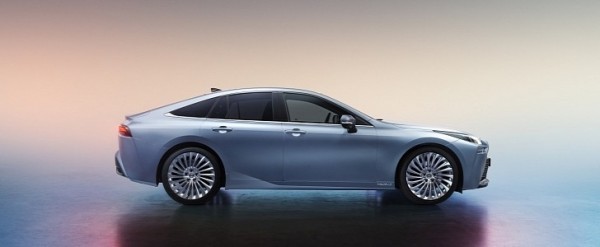 26 photos
26 photos
A simple conversion from the Japanese yen to the U.S. dollar revealed a price of just over $68,000 - $68,191, to be more precise. That was $10,000 more than the old model, though you would be forgiven if you were willing to pay double that difference based only on how much better the new Mirai looks.
The design of the Prius Prime and the old Mirai was completely confusing. You could honestly ask yourself if Toyota wanted us to buy its cars or was just happy to keep them all for itself. It was as if a salesperson told you how good the cars were and that you should buy them, but then lowered their voice, saying "seriously, though, don't buy them" while winking at you. You had to pinch yourself to make sure you weren't dreaming.
Luckily, all that is over now, and the new model isn't just better than the old one, but actually a sexy-looking sedan in its own right. It's also better all-round, not to mention more affordable as well. Somehow, the Japanese manufacturer managed to give the 2021 Mirai a starting MSRP of $49,500, which undercuts the old model's price by more than $9,000. It's also close to $20,000 less expensive than the JDM Mirai, though comparing different markets doesn't always make sense.
The secret behind this apparently impossible feat is Toyota's decision to introduce two different trim levels, instead of having a single, top-of-the-line spec like before. The two are called XLE and Limited, and the good news is the base one comes pretty much fully decked-out. You get heated power seats in the front (8-way for the driver, 4-way for the passenger), auto-leveling LED headlamps, remote keyless entry system, Toyota Premium Multimedia system with navigation, and 14 JBL speakers, to mention just a few.
It's not just the looks that have changed for the Mirai, but also the way it drives. Gone is the FWD platform, replaced with the GA-L RWD one also used for the Lexus LS sedan. As a result, the car has also grown in length and width while dropping the height of the roofline at the same time. What you get is sleeker looks, but also much-improved handling and a roomier interior.
Apparently, you also get to travel 30 miles (50 km) further than before. Switching to RWD made more room for storing hydrogen, resulting in an EPA-estimated range of 402 miles (647 km). The new generation offers more power but less torque, clocking in at 182 hp and 221 lb-ft (300 Nm) compared to the 151 hp and 247 lb-ft (335 Nm) of the outgoing model.
To make things even more attractive, Toyota is also throwing in up to $15,000 worth of complimentary hydrogen. Put it all together and there has obviously never been a better time to buy - or lease - a Toyota Mirai.
 26 photos
26 photosA simple conversion from the Japanese yen to the U.S. dollar revealed a price of just over $68,000 - $68,191, to be more precise. That was $10,000 more than the old model, though you would be forgiven if you were willing to pay double that difference based only on how much better the new Mirai looks.
The design of the Prius Prime and the old Mirai was completely confusing. You could honestly ask yourself if Toyota wanted us to buy its cars or was just happy to keep them all for itself. It was as if a salesperson told you how good the cars were and that you should buy them, but then lowered their voice, saying "seriously, though, don't buy them" while winking at you. You had to pinch yourself to make sure you weren't dreaming.
Luckily, all that is over now, and the new model isn't just better than the old one, but actually a sexy-looking sedan in its own right. It's also better all-round, not to mention more affordable as well. Somehow, the Japanese manufacturer managed to give the 2021 Mirai a starting MSRP of $49,500, which undercuts the old model's price by more than $9,000. It's also close to $20,000 less expensive than the JDM Mirai, though comparing different markets doesn't always make sense.
The secret behind this apparently impossible feat is Toyota's decision to introduce two different trim levels, instead of having a single, top-of-the-line spec like before. The two are called XLE and Limited, and the good news is the base one comes pretty much fully decked-out. You get heated power seats in the front (8-way for the driver, 4-way for the passenger), auto-leveling LED headlamps, remote keyless entry system, Toyota Premium Multimedia system with navigation, and 14 JBL speakers, to mention just a few.
It's not just the looks that have changed for the Mirai, but also the way it drives. Gone is the FWD platform, replaced with the GA-L RWD one also used for the Lexus LS sedan. As a result, the car has also grown in length and width while dropping the height of the roofline at the same time. What you get is sleeker looks, but also much-improved handling and a roomier interior.
Apparently, you also get to travel 30 miles (50 km) further than before. Switching to RWD made more room for storing hydrogen, resulting in an EPA-estimated range of 402 miles (647 km). The new generation offers more power but less torque, clocking in at 182 hp and 221 lb-ft (300 Nm) compared to the 151 hp and 247 lb-ft (335 Nm) of the outgoing model.
To make things even more attractive, Toyota is also throwing in up to $15,000 worth of complimentary hydrogen. Put it all together and there has obviously never been a better time to buy - or lease - a Toyota Mirai.
#20
Moderator
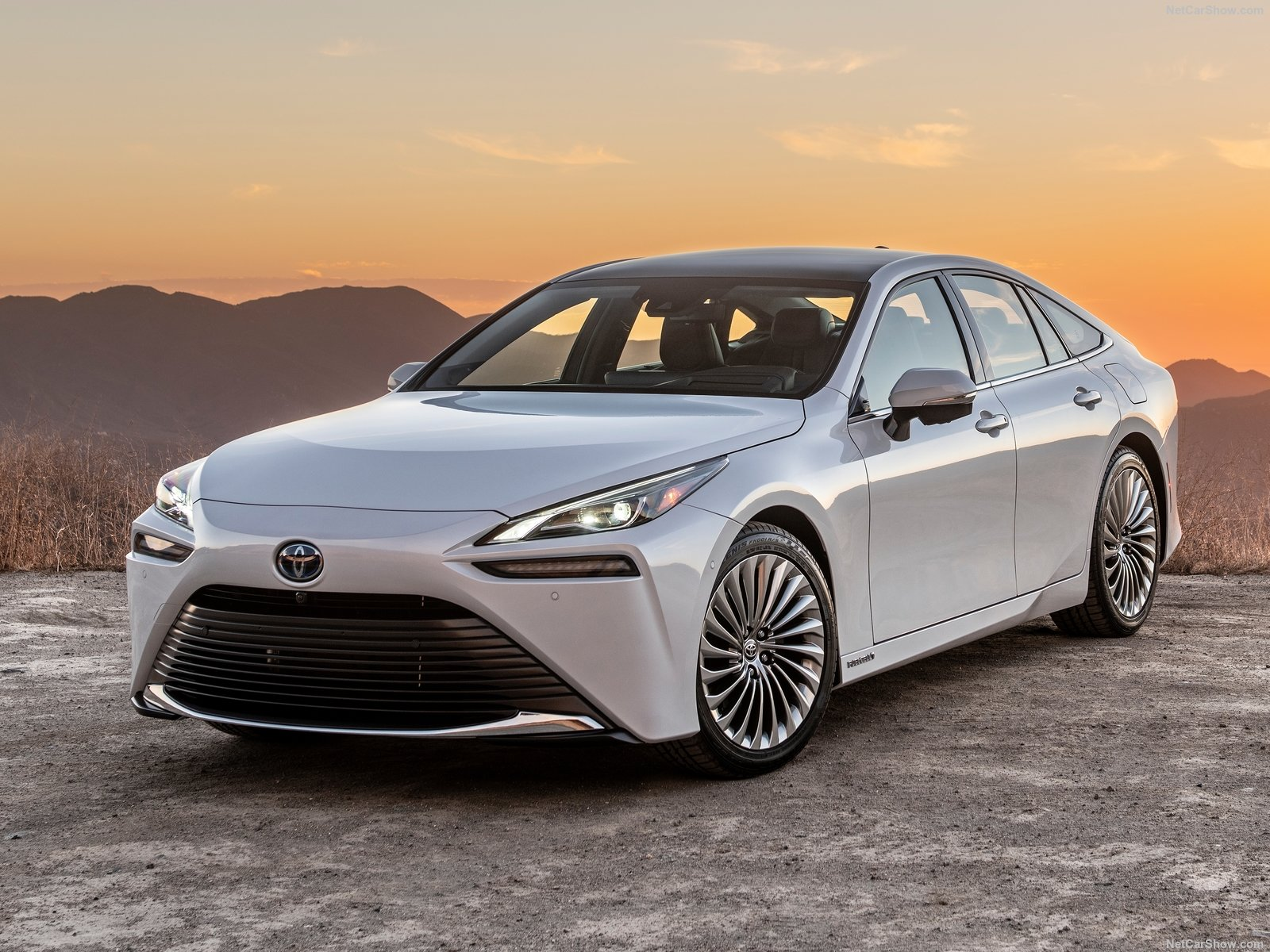
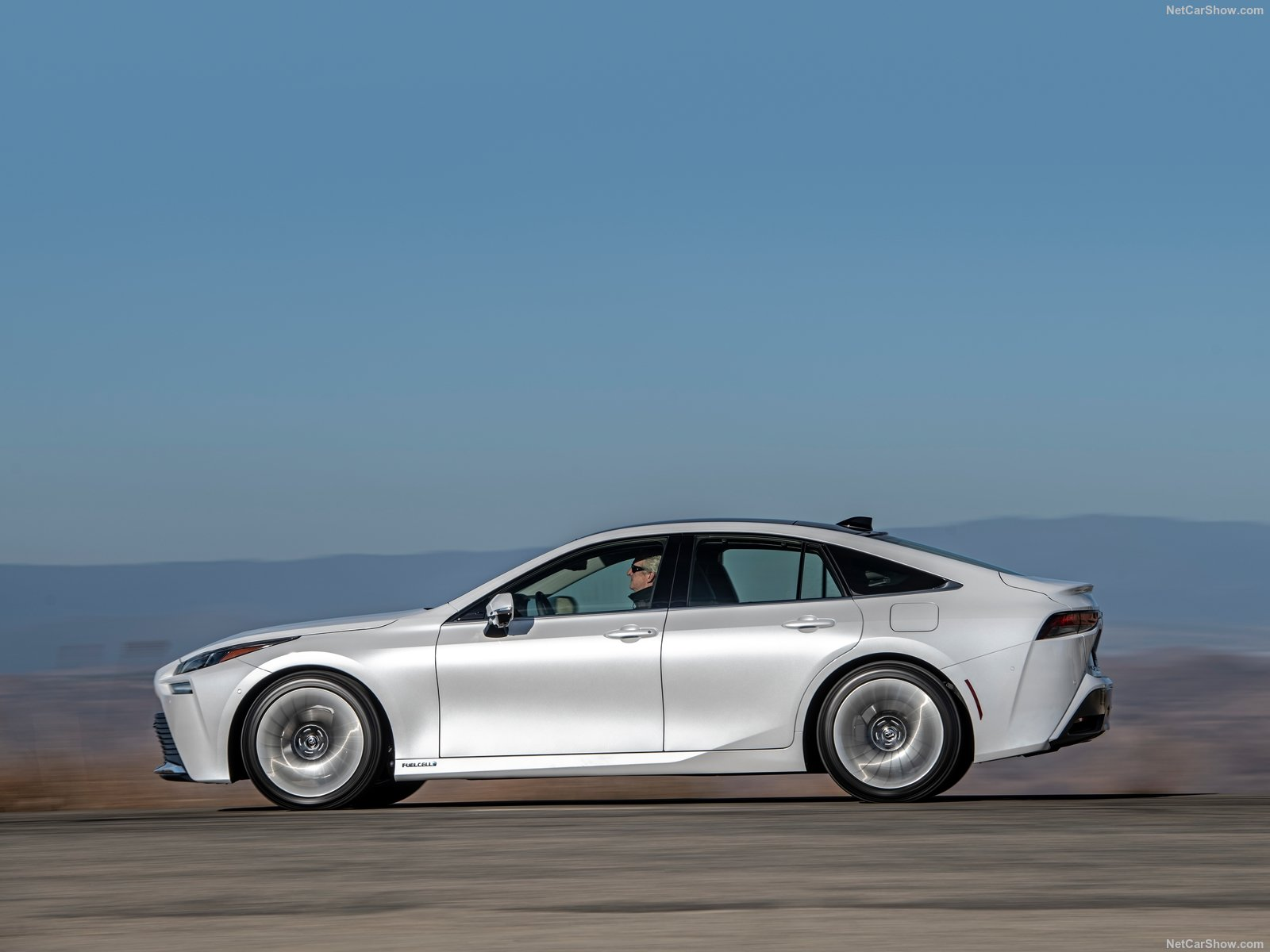
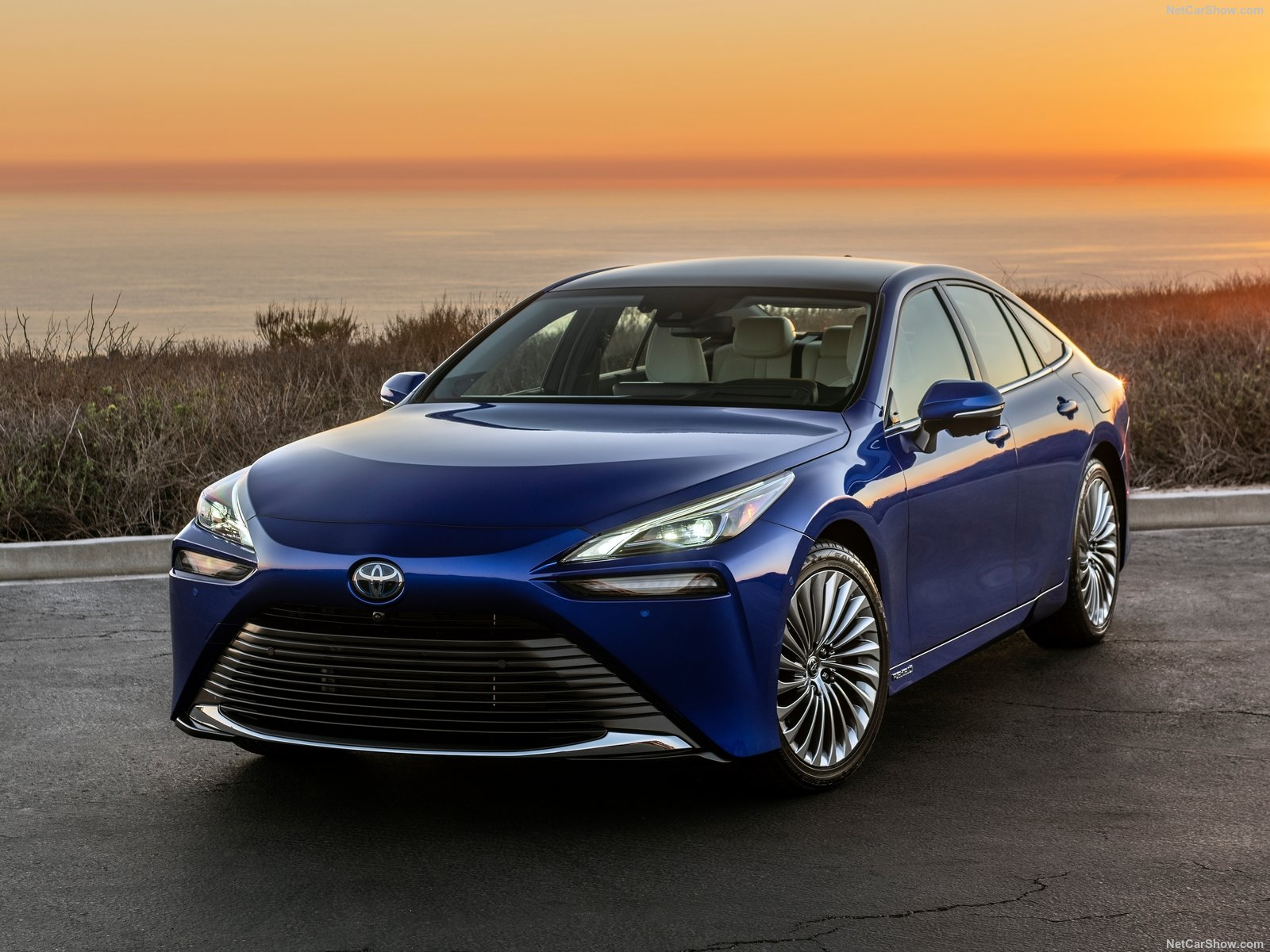

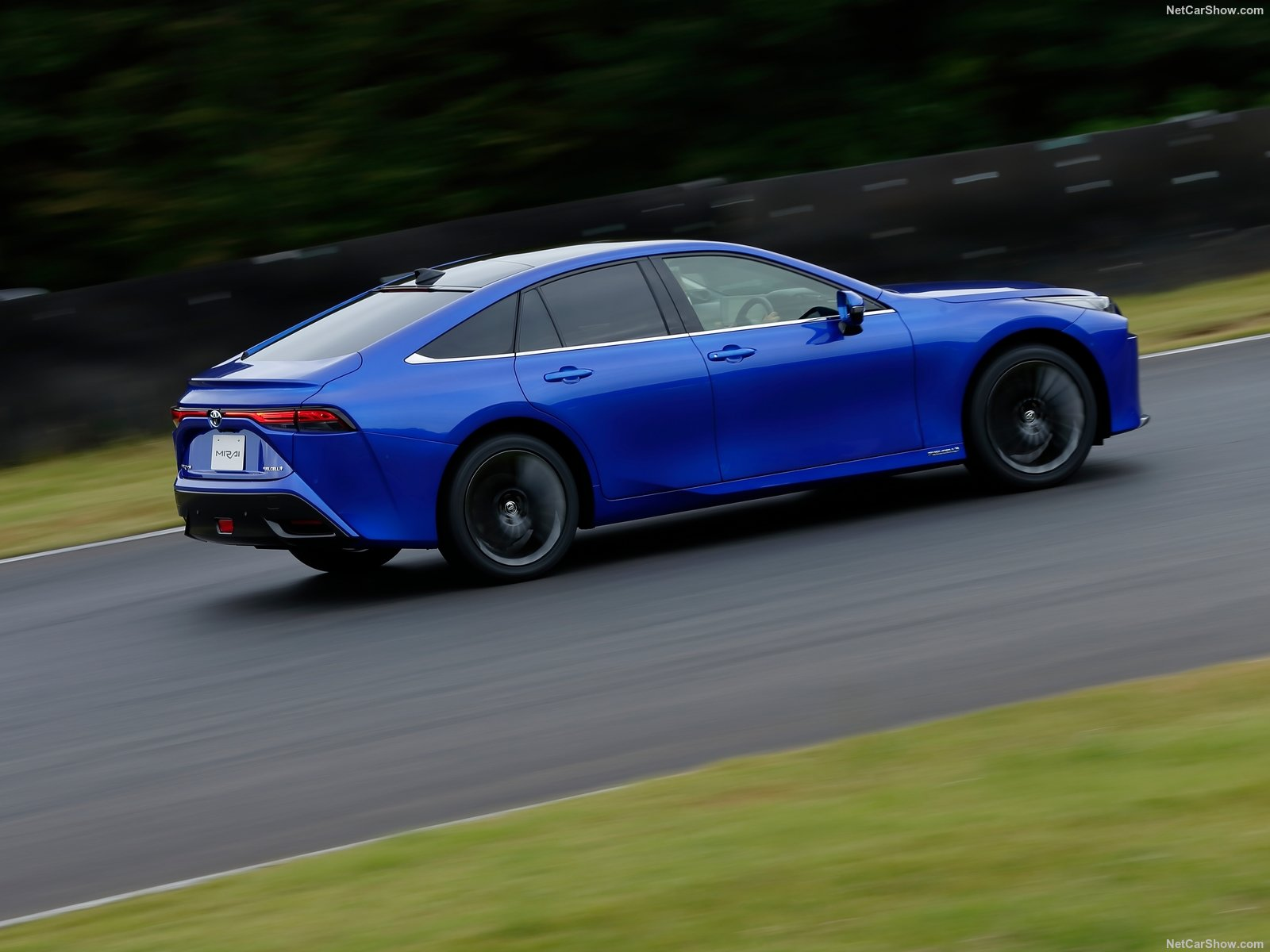
#21
Moderator
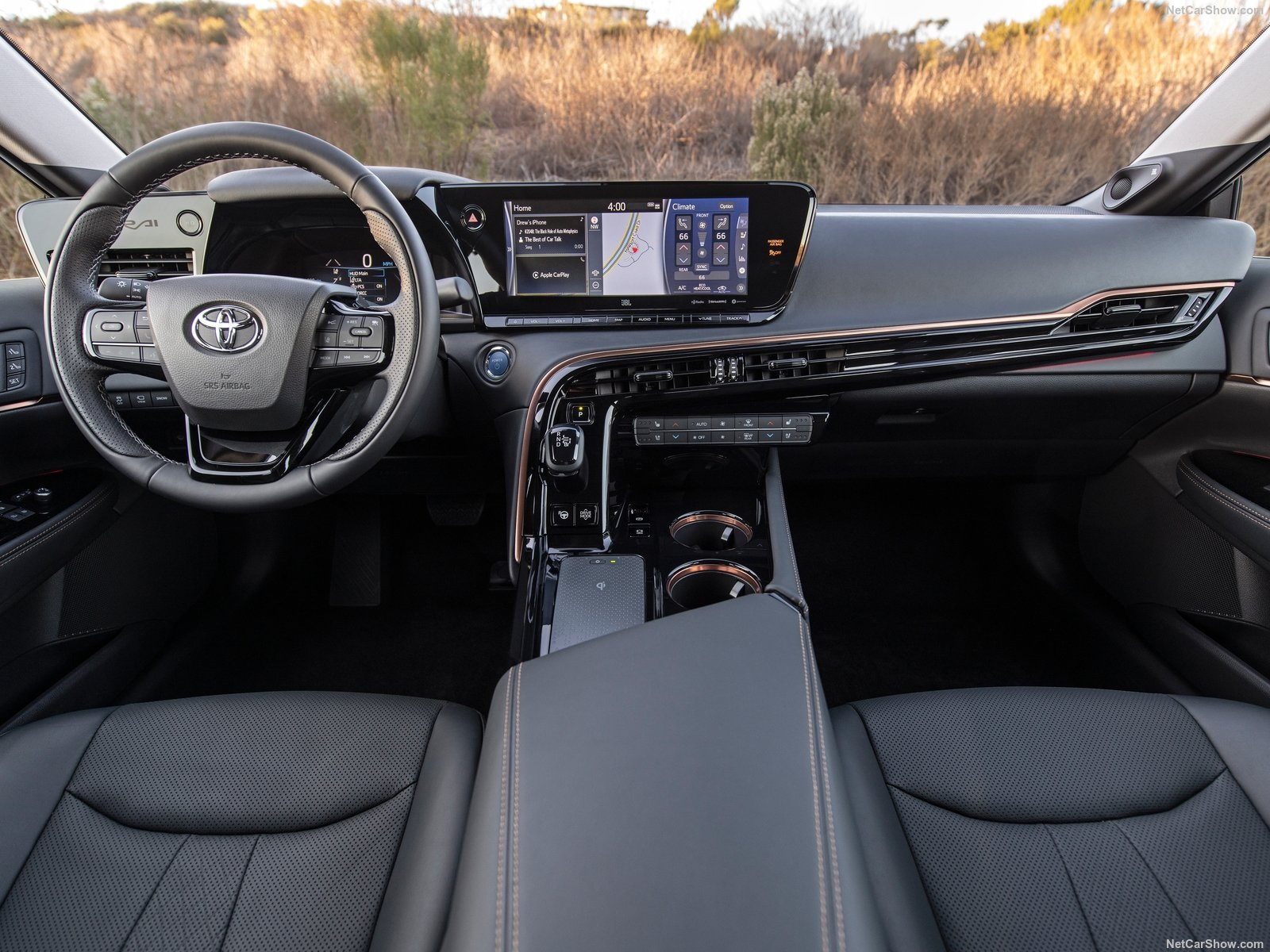

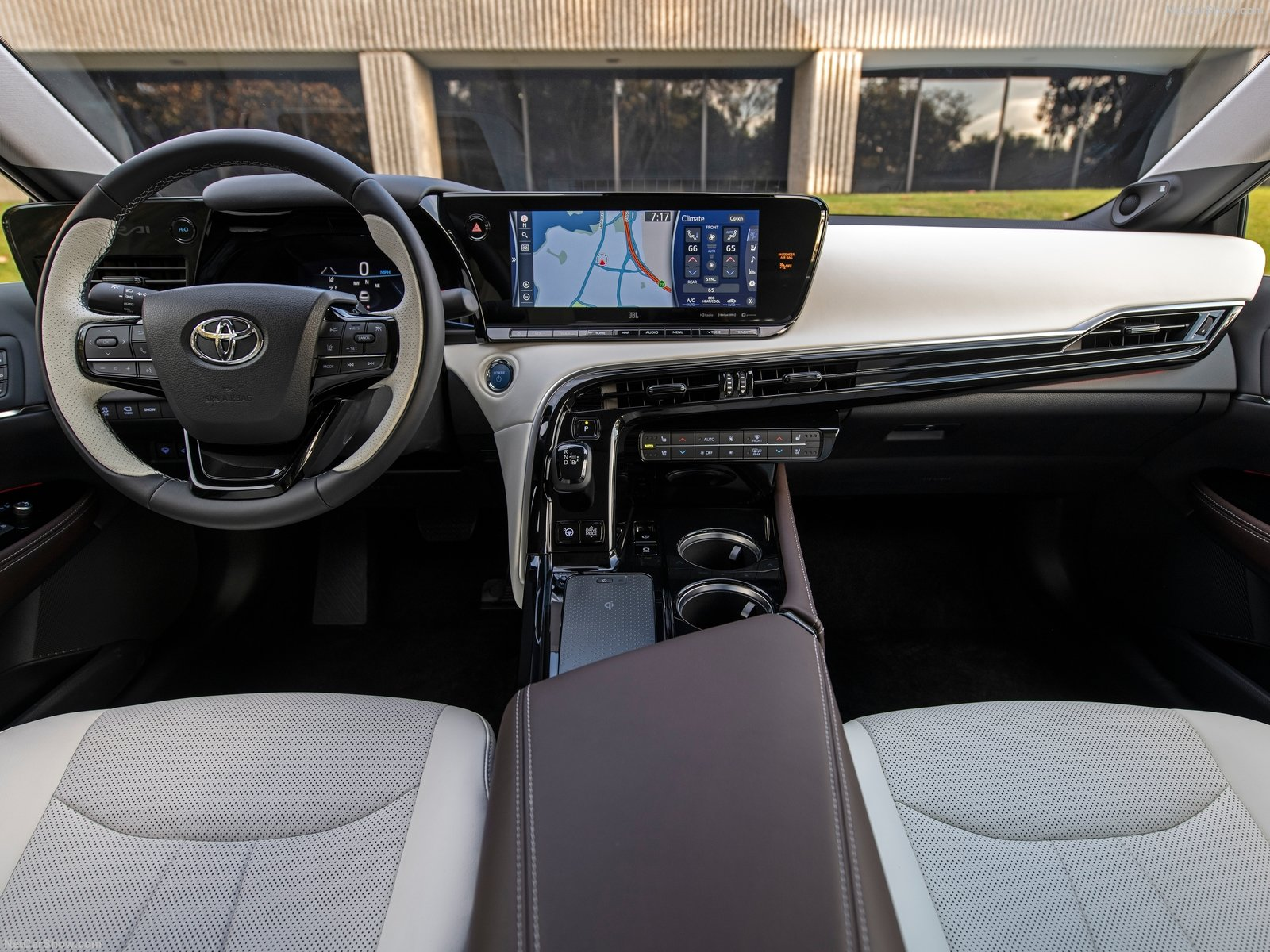

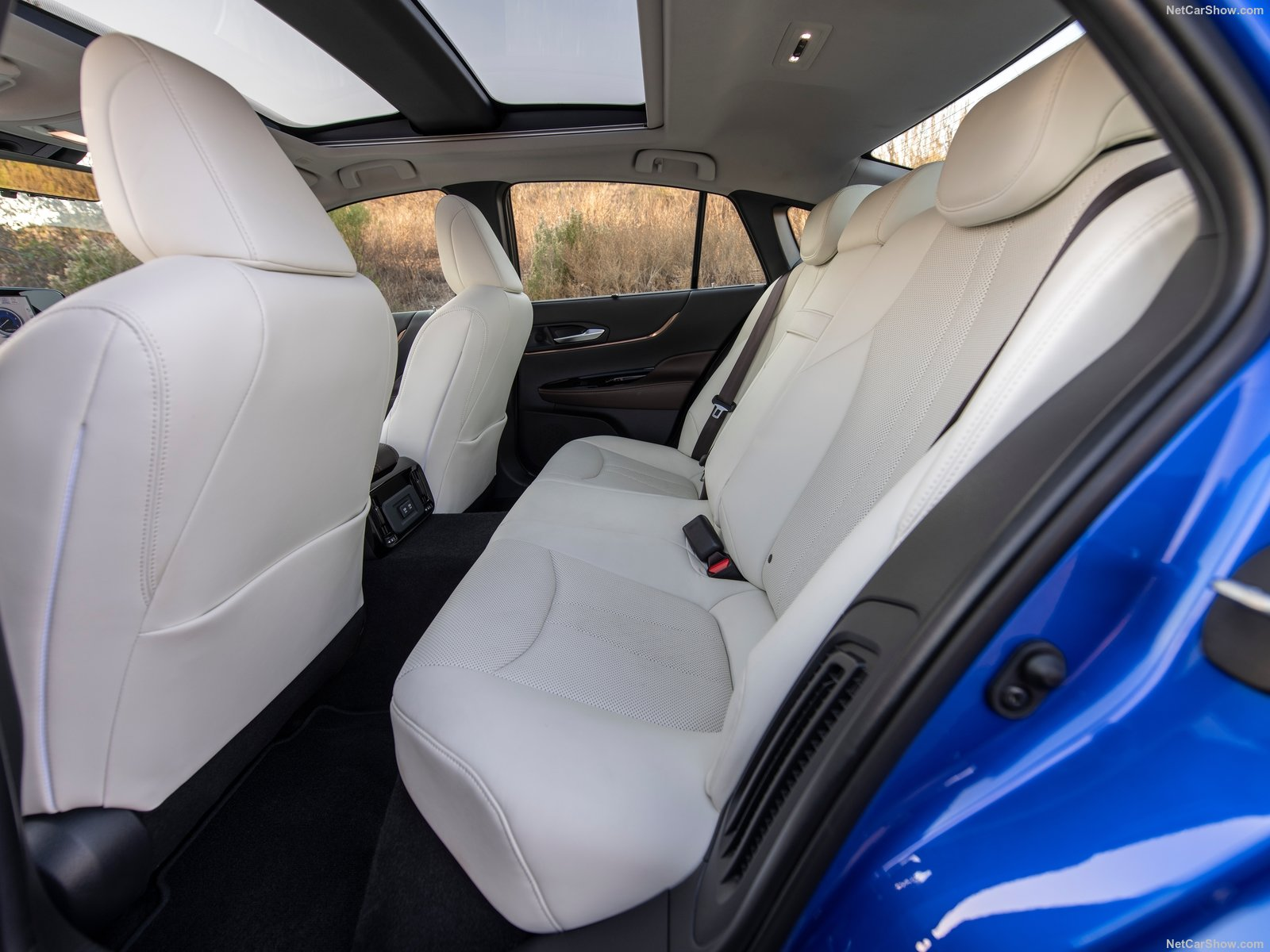
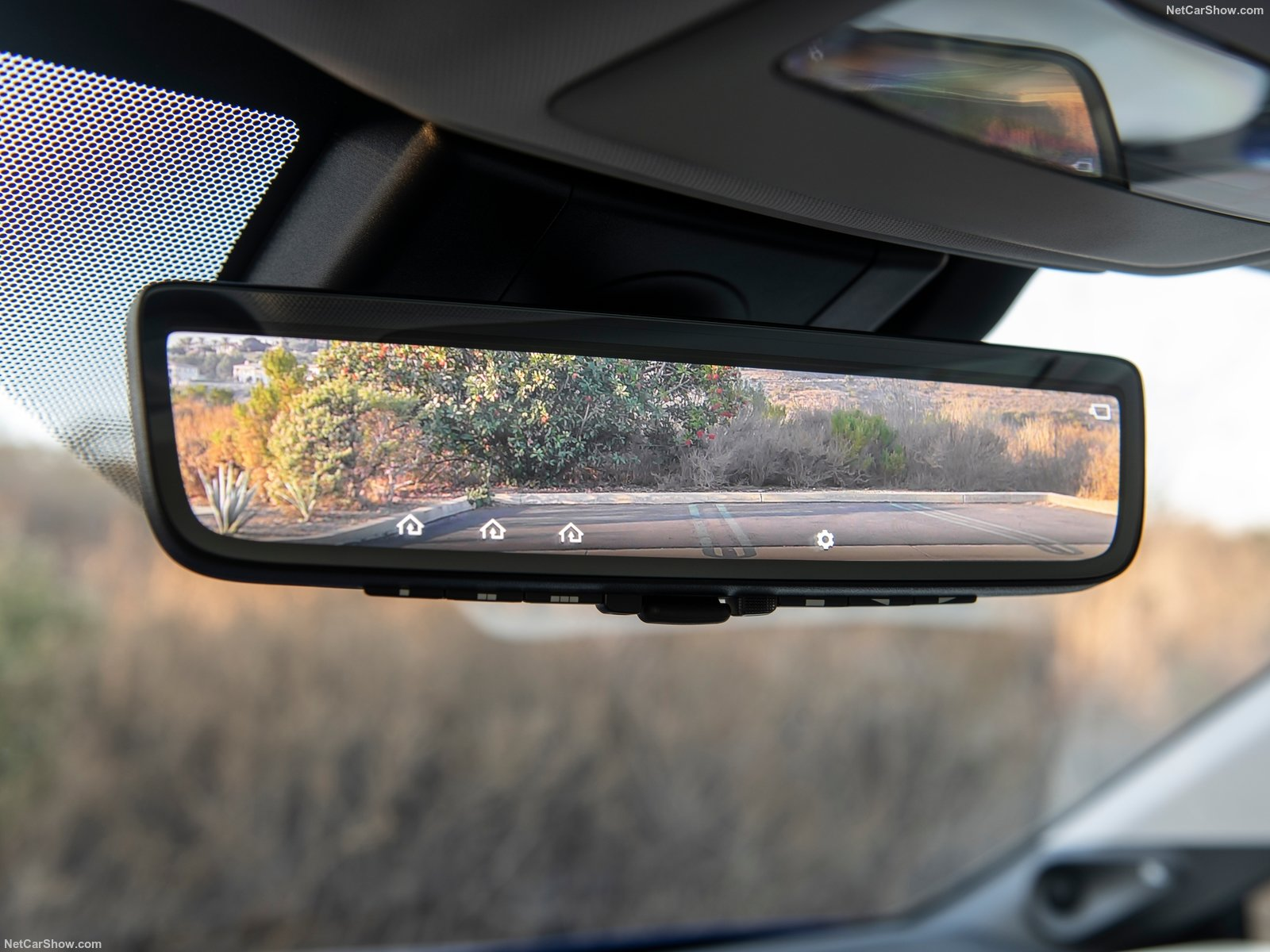


#23
Race Director
Thread Starter
The 2021 Toyota Mirai is a stonking deal if you live in one of the few areas of this country with a hydrogen refueling station. Toyota prices the base XLE trim at $50,495, including the $995 destination charge, but what you’ll pay is nowhere near this price. CarsDirect recently discovered new incentives for the car that are enough to raise anybody’s eyebrows.
From now until the end of March, Toyota is offering a $20,000 incentive when taking advantage of Toyota financing. On its own, this brings the effective base price down to $30,495, or $46,995 for the Limited (yes, that trim level really is $16,500 more). But wait, there are government tax rebates to be taken into account here, too. The U.S. government will hand you an $8,000 federal tax credit, and the state of California (the only state you can buy the Mirai in) will shovel another $4,500 your way. Those two taken into account, you’re looking at an effective base price of $17,995. The Limited goes down to $34,495 after you collect those rebates, which is a wild deal versus the car’s $66,995 starting price, but its extras are hardly necessary and surprisingly few given the $16,500 premium. In other words, just stick with that $17,995 XLE.
This gets even harder to say no to when you remember that Toyota is offering every Mirai buyer a $15,000 fuel credit for three years and 21 days of free car rentals should you need to go further than the Mirai allows (357-mile range with the Limited trim and 402 miles with an XLE).
This is starting to get ridiculous, but CarsDirect also reports that Toyota is offering zero-interest financing for up to 72 months. The cost of ownership for this brand new and extremely nice hydrogen car is dizzyingly cheap right now. Using the “it’s a steal” cliche is too applicable in this the situation to forego saying it.
If you live in the Bay Area or Southern California, want to dive into the zero-emissions lifestyle and are relatively near a hydrogen station, consider the Mirai. This deal will supposedly expire at the end of March, and while it’s likely that Mirais will continue to be slow-sellers, we can’t say what the next few months of incentives will hold. You can read about what we think of the redesigned and stylish Mirai in our first drive review here.
From now until the end of March, Toyota is offering a $20,000 incentive when taking advantage of Toyota financing. On its own, this brings the effective base price down to $30,495, or $46,995 for the Limited (yes, that trim level really is $16,500 more). But wait, there are government tax rebates to be taken into account here, too. The U.S. government will hand you an $8,000 federal tax credit, and the state of California (the only state you can buy the Mirai in) will shovel another $4,500 your way. Those two taken into account, you’re looking at an effective base price of $17,995. The Limited goes down to $34,495 after you collect those rebates, which is a wild deal versus the car’s $66,995 starting price, but its extras are hardly necessary and surprisingly few given the $16,500 premium. In other words, just stick with that $17,995 XLE.
This gets even harder to say no to when you remember that Toyota is offering every Mirai buyer a $15,000 fuel credit for three years and 21 days of free car rentals should you need to go further than the Mirai allows (357-mile range with the Limited trim and 402 miles with an XLE).
This is starting to get ridiculous, but CarsDirect also reports that Toyota is offering zero-interest financing for up to 72 months. The cost of ownership for this brand new and extremely nice hydrogen car is dizzyingly cheap right now. Using the “it’s a steal” cliche is too applicable in this the situation to forego saying it.
If you live in the Bay Area or Southern California, want to dive into the zero-emissions lifestyle and are relatively near a hydrogen station, consider the Mirai. This deal will supposedly expire at the end of March, and while it’s likely that Mirais will continue to be slow-sellers, we can’t say what the next few months of incentives will hold. You can read about what we think of the redesigned and stylish Mirai in our first drive review here.
#24
Race Director
Thread Starter
It is widely believed that the future of the automobile is fully electric, but Toyota is among those who would agree to disagree. Thus, they have taken the 2021 Mirai, filled its tank with hydrogen and drove it until it died, setting a new record.
6 photos
The fuel cell vehicle’s journey started in Orly, near Paris, France, and ended after 1,003 kilometers (623 miles) of driving on public roads in the Loir-et-Cher and Indre-et-Loire areas.
For the record-breaking journey, the Mirai used green hydrogen, returning 0.55 kg/100 km. The distance and fuel consumption were certified by an independent authority, and having completed the challenge, which Toyota says that it can be replicated in everyday driving, it was refueled in around 5 minutes.
A total of four drivers were tasked with driving it economically, and among those who grabbed the wheel, were Victorien Erussard, the founder and captain of Energy Observer, a zero-emission boat that features a fuel cell stack made by Toyota. The team also included Toyota Motor Europe’s engineer, James Olden, Mirai Product Manager, Maxime le Hir, and Toyota France PR Manager, Marie Gadd.
A second generation model, the 2021 Mirai is built around the GA-L platform, and has 185 PS (182 HP / 136 kW) produced by its fuel cell powertrain. It can accelerate to 100 kph (62 mph) in a very decent 9 seconds, and it is capable of breaking the legal speed limits, with a maximum of 175 kph (109 mph).
The fuel cell system boasts improved efficiency, and the hydrogen capacity has been increased by 1 kg (2.2 lbs) over its predecessor. As a result, it can travel for around 650 km (400 miles) in normal conditions.
The 2021 Mirai has an MSRP of $49,500 in the United States, and a recommended retail price of €63,900 (equal to $77,770) in Germany.
6 photos
The fuel cell vehicle’s journey started in Orly, near Paris, France, and ended after 1,003 kilometers (623 miles) of driving on public roads in the Loir-et-Cher and Indre-et-Loire areas.
For the record-breaking journey, the Mirai used green hydrogen, returning 0.55 kg/100 km. The distance and fuel consumption were certified by an independent authority, and having completed the challenge, which Toyota says that it can be replicated in everyday driving, it was refueled in around 5 minutes.
A total of four drivers were tasked with driving it economically, and among those who grabbed the wheel, were Victorien Erussard, the founder and captain of Energy Observer, a zero-emission boat that features a fuel cell stack made by Toyota. The team also included Toyota Motor Europe’s engineer, James Olden, Mirai Product Manager, Maxime le Hir, and Toyota France PR Manager, Marie Gadd.
A second generation model, the 2021 Mirai is built around the GA-L platform, and has 185 PS (182 HP / 136 kW) produced by its fuel cell powertrain. It can accelerate to 100 kph (62 mph) in a very decent 9 seconds, and it is capable of breaking the legal speed limits, with a maximum of 175 kph (109 mph).
The fuel cell system boasts improved efficiency, and the hydrogen capacity has been increased by 1 kg (2.2 lbs) over its predecessor. As a result, it can travel for around 650 km (400 miles) in normal conditions.
The 2021 Mirai has an MSRP of $49,500 in the United States, and a recommended retail price of €63,900 (equal to $77,770) in Germany.
#25
Race Director
Thread Starter
The second-generation Toyota Mirai hydrogen fuel cell vehicle is heading into its second year on the California market, that being the only state where the sedan can be purchased for the moment. Toyota didn't raise the prices of the two trims for next year, but has increased the destination fee by $30, from $995 to $1,025. The entry-level Mirai XLE starts at $50,525 after destination, the Mirai Limited at a gulp-worthy $67,025, though perhaps that's not bad for a rear-wheel drive sedan with near 50-50 weight distribution, standard LED headlights and 19-inch wheels. The only spec that runs afoul of the equation is output, at 182 horsepower and 221 pound-feet of torque.
Every Mirai comes with blind spot monitoring, rear cross traffic alert, and Toyota Safety Sense 2.5+ standard. Safety Sense 2.5+ installs automatic high beams; pre-collision avoidance with pedestrian detection, intersection support, and emergency steering assist; adaptive cruiser control; lane departure alert; lane tracing assist which keeps the Mirai centered in the lane and road sign assist.
According to Toyota, the XLE can go 402 miles on a full tank of compressed hydrogen on the standard 19-inch wheels. The trim comes with an eight- and a four-way power heated front seat for the driver and passenger, respectively, each trimmed in SoftTex. The eight-inch gauge cluster containing a 4.2-inch driver display is paired with a 12.3-inch infotainment screen that runs Android Auto and Apple CarPlay standard, and runs its sounds through a 14-speaker JBL audio system. Other standard convenience features include wireless charging and dual-zone climate control. A $1,410 optional Advanced Technology Package adds a bird's-eye view camera, front and rear parking assist with automated braking, and front seat footwell illumination.
Range on the Limited drops to 357 miles, which seems like a fair chunk to give up for a trim that also rides on 19-inch wheels standard and costs quite a bit more. The Limited gets the Advanced Technology Package as standard equipment, plus two eight-way power front seats, heated and ventilated chairs throughout, tri-zone climate control, ambient lighting, and a fixed panoramic roof. A set of 20-inch wheels, which would eat more range, is a $1,120 option.
Anyone who buys or leases gets $15,000 worth of hydrogen courtesy of Toyota. With hydrogen around $16 per kilogram at the time of writing and the Mirai tanks able to swallow about five kilograms, that's almost 188 fill-ups, which should get a driver to the next trade-in or lease without paying for (literal) gas. On top of that, the included Toyota Extended Care pays for three years or 35,000 miles of scheduled maintenance, roadside assistance for unlimited miles and a free rental car for up to 21 days over the same span.
Every Mirai comes with blind spot monitoring, rear cross traffic alert, and Toyota Safety Sense 2.5+ standard. Safety Sense 2.5+ installs automatic high beams; pre-collision avoidance with pedestrian detection, intersection support, and emergency steering assist; adaptive cruiser control; lane departure alert; lane tracing assist which keeps the Mirai centered in the lane and road sign assist.
According to Toyota, the XLE can go 402 miles on a full tank of compressed hydrogen on the standard 19-inch wheels. The trim comes with an eight- and a four-way power heated front seat for the driver and passenger, respectively, each trimmed in SoftTex. The eight-inch gauge cluster containing a 4.2-inch driver display is paired with a 12.3-inch infotainment screen that runs Android Auto and Apple CarPlay standard, and runs its sounds through a 14-speaker JBL audio system. Other standard convenience features include wireless charging and dual-zone climate control. A $1,410 optional Advanced Technology Package adds a bird's-eye view camera, front and rear parking assist with automated braking, and front seat footwell illumination.
Range on the Limited drops to 357 miles, which seems like a fair chunk to give up for a trim that also rides on 19-inch wheels standard and costs quite a bit more. The Limited gets the Advanced Technology Package as standard equipment, plus two eight-way power front seats, heated and ventilated chairs throughout, tri-zone climate control, ambient lighting, and a fixed panoramic roof. A set of 20-inch wheels, which would eat more range, is a $1,120 option.
Anyone who buys or leases gets $15,000 worth of hydrogen courtesy of Toyota. With hydrogen around $16 per kilogram at the time of writing and the Mirai tanks able to swallow about five kilograms, that's almost 188 fill-ups, which should get a driver to the next trade-in or lease without paying for (literal) gas. On top of that, the included Toyota Extended Care pays for three years or 35,000 miles of scheduled maintenance, roadside assistance for unlimited miles and a free rental car for up to 21 days over the same span.
Biker, who is waiting for the BEV and tire size advocates to weigh in on this one.
#26
Race Director
Thread Starter
It was a small surprise to see Toyota launch a second-generation Mirai. The hydrogen fuel-cell vehicle was never a strong seller, but that didn't stop the company from investing in the technology. Two years later, though, Toyota is singing a different tune. The Mirai has not been successful, with the company deciding to develop the technology for commercial vehicles.
Toyota's chief technology officer, Hiroki Nakajima, said during the Japan Mobility Show that it has been "difficult to realize" hydrogen fueling stations, according to Autocar. This has limited the Mirai's sales, which has “not been successful.” According to the US Department of Energy's Alternative Fuels Data Center, there are only 57 hydrogen refueling locations in the US, all in California.
Nakajima told the publication that hydrogen is better suited for cars that mainly travel between two locations, like commercial vehicles. Their often limited and specific use would make it easier to provide stable refueling options. Toyota and Isuzu announced earlier this month that the two would develop light hydrogen fuel-cell trucks together. The first-generation Mirai never cracked 2,000 sales, but the second-generation has beaten that mark every year since 2021, the model's highest sales year ever. Sales dipped in 2022 to just over 2,000 but are rebounding this year. Toyota has sold 2,604 Mirai sedans through September 2023, up over 80 percent compared to the first nine months of 2022.
Not every automaker is just yet hanging up the hat on hydrogen-powered passenger cars. Honda unveiled a CR-V-based crossover that has a fuel cell earlier this month. It'll launch in the US and Japan next year, but expect the limited number of fueling stations to restrict its availability and sales, just like the Mirai.
Toyota and other automakers are also developing hydrogen combustion engines. Last week, a company introduced a new race engine concept that makes 410 horsepower. At this year's Japan Mobility Show, Toyota showed off a hydrogen-combustion buggy that it designed in collaboration with Honda, Suzuki, and Kawasaki, which could have a future in passenger cars.
Motor1.com reached out to Toyota about the future of the Mirai sedan. We’ll update the story if Toyota responds. We also asked if this decision affects the company’s research into hydrogen internal combustion engines.
Toyota's chief technology officer, Hiroki Nakajima, said during the Japan Mobility Show that it has been "difficult to realize" hydrogen fueling stations, according to Autocar. This has limited the Mirai's sales, which has “not been successful.” According to the US Department of Energy's Alternative Fuels Data Center, there are only 57 hydrogen refueling locations in the US, all in California.
Nakajima told the publication that hydrogen is better suited for cars that mainly travel between two locations, like commercial vehicles. Their often limited and specific use would make it easier to provide stable refueling options. Toyota and Isuzu announced earlier this month that the two would develop light hydrogen fuel-cell trucks together. The first-generation Mirai never cracked 2,000 sales, but the second-generation has beaten that mark every year since 2021, the model's highest sales year ever. Sales dipped in 2022 to just over 2,000 but are rebounding this year. Toyota has sold 2,604 Mirai sedans through September 2023, up over 80 percent compared to the first nine months of 2022.
Not every automaker is just yet hanging up the hat on hydrogen-powered passenger cars. Honda unveiled a CR-V-based crossover that has a fuel cell earlier this month. It'll launch in the US and Japan next year, but expect the limited number of fueling stations to restrict its availability and sales, just like the Mirai.
Toyota and other automakers are also developing hydrogen combustion engines. Last week, a company introduced a new race engine concept that makes 410 horsepower. At this year's Japan Mobility Show, Toyota showed off a hydrogen-combustion buggy that it designed in collaboration with Honda, Suzuki, and Kawasaki, which could have a future in passenger cars.
Motor1.com reached out to Toyota about the future of the Mirai sedan. We’ll update the story if Toyota responds. We also asked if this decision affects the company’s research into hydrogen internal combustion engines.
Thread
Thread Starter
Forum
Replies
Last Post
heyitsme
Automotive News
2
01-06-2006 05:00 PM




